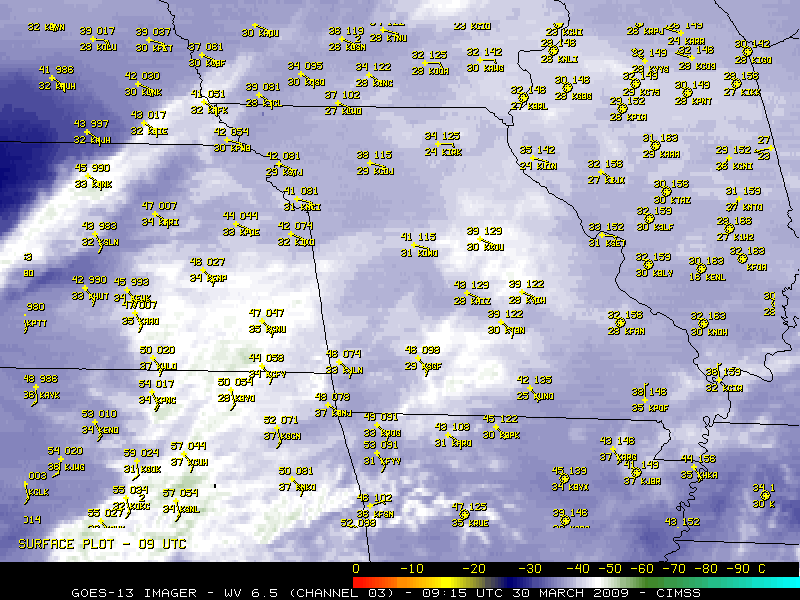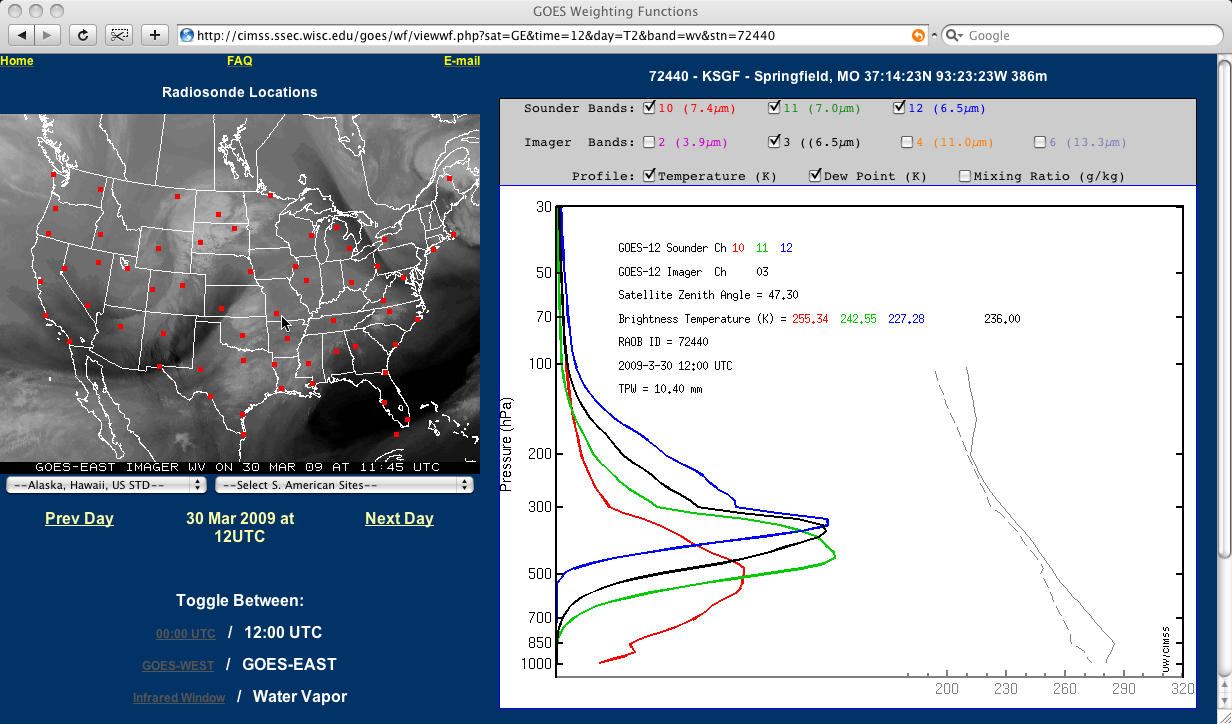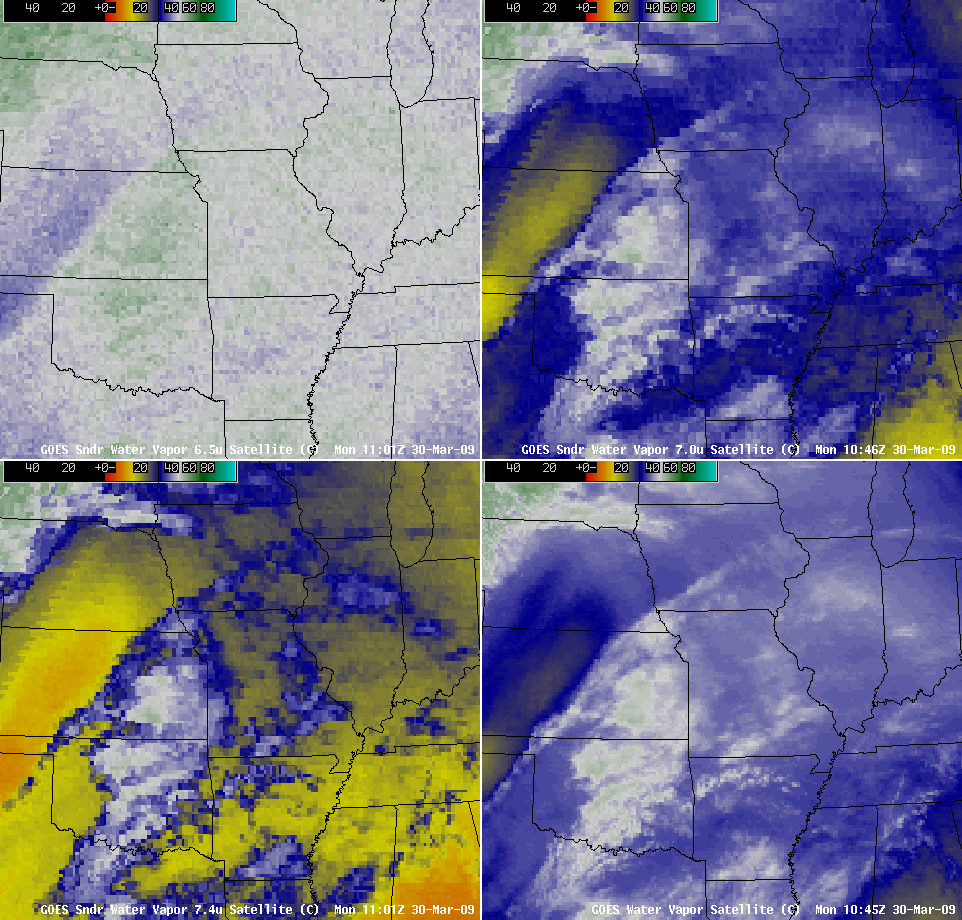Standing wave aloft over Missouri?
Another one for the “What the heck is this?” blog category. Jeff Craven (SOO at the Milwaukee/Sullivan NWS forecast office) pointed out in an email:
“The mid/high cloud deck in warm conveyor belt from OK into MO has an interesting strong subsident area over MO. It looks almost like a standing wave feature.”
GOES-13 6.5 µm “water vapor channel” images (above) showed this interesting feature, which was oriented approximately N-S across western Missouri for several hours during the day on 30 March 2009. Note how the middle and upper level clouds appeared to dissipate very quickly as they moved eastward across the “standing wave” feature.
There was a warm frontal boundary moving northward across that region, which was nearly perpendicular to the standing wave feature — so the orientation of that surface-based boundary appeared to be unrelated to the standing wave aloft. In addition, there did not appear to be any pilot reports of turbulence associated with this particular standing wave feature.
According to the CIMSS GOES Weighting Functions site, calculations using 12 UTC rawinsonde data from Springfield MO indicated that the GOES-12 imager water vapor channel weighting function (black plot) was peaking around the 400 hPa pressure level (above) — so most features seen on the GOES imager water vapor channel data over that particular region were probably residing within the 300-500 hPa layer. However, a comparison of AWIPS images of the GOES-12 imager water vapor channel and the three GOES-12 sounder water vapor channels (below) revealed that the signature of this standing wave feature was a bit more well-defined on the GOES-12 sounder 7.4 µm water wapor images (whose weighting function peaked near the 500 hPa pressure level, as seen on the red plot above).
West-to-east oriented cross sections of RUC40 model fields (below) did not show any significant changes in the height of the dynamic tropopause over that region, but the yellow contours of potential temperature (especially the 315 K and 318 K contours) did exhibit a bit of a dip downward in the general area where the standing wave appeared on water vapor imagery (as if to suggest that there could have been some subsidence there, if the flow had indeed been adiabatic).
As much as we hate to let Jeff down, that’s the best explanation we can conjure up at this time. If any of you blog readers have any other ideas which might help to explain why this feature was apparently acting as a “standing wave” for several hours, send us email!





